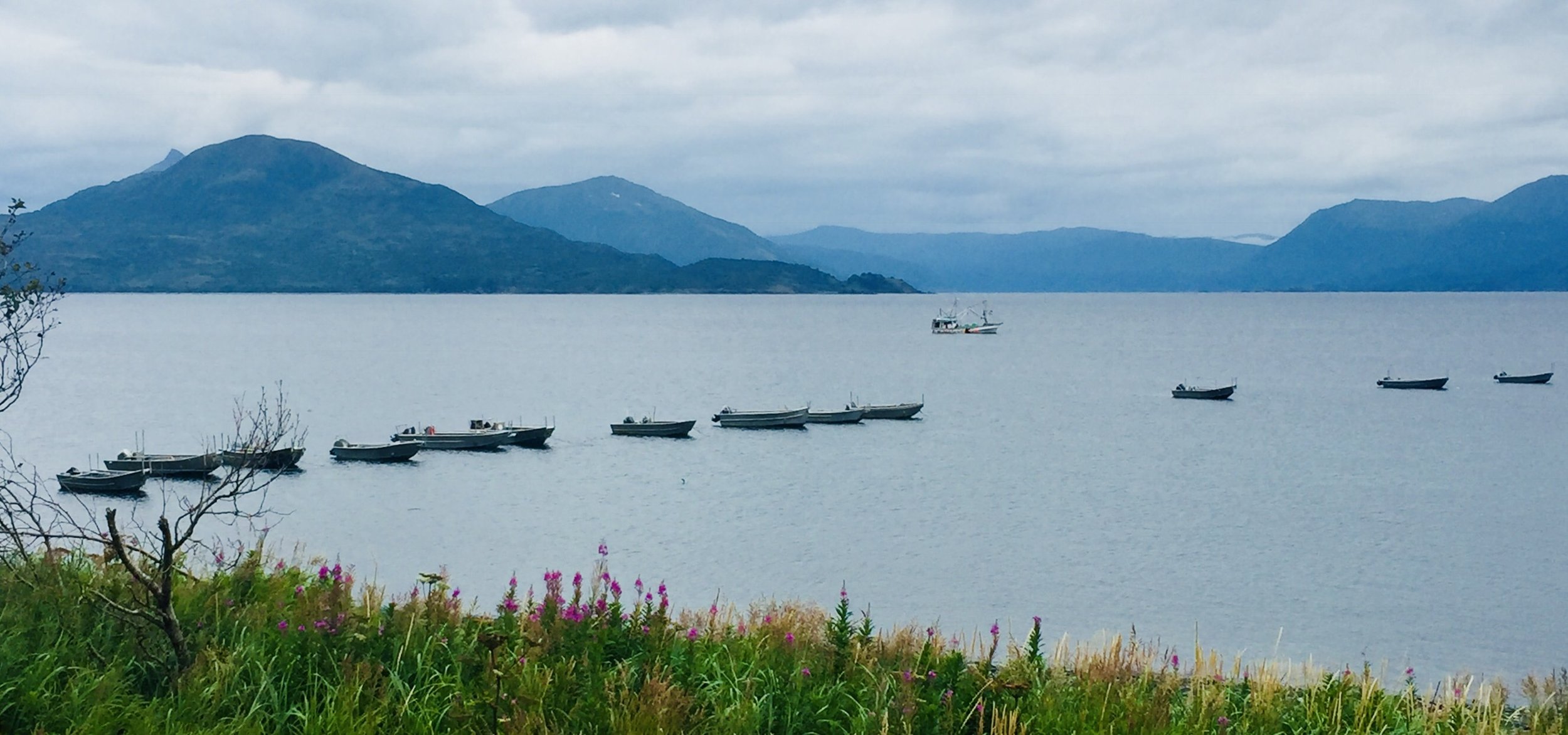
Our History
Kodiak Salmon: Sustaining its people for more than 10,000 years
Anchored in the nutrient rich waters of the Gulf of Alaska, the Kodiak Island Archipelago is prime breeding territory for Pacific salmon.
Offshore, salmon feed on the upwelling of microscopic marine organisms in the open waters of the Gulf. Near shore, salmon find streams and rivers throughout the island group’s 5,000 square miles of pristine habitat to spawn, grow and return to lay their eggs.
Bountiful salmon runs provide Kodiak’s 3,500 brown bears more than 60 percent of their diet. Salmon also is a major component of Kodiak’s commercial, sport and subsistence fisheries, an economic mainstay that ensures Kodiak’s longstanding rank as one of the top three fishing ports in the U.S.
Salmon have sustained Kodiak residents since the Alutiit, the first people of Kodiak, inhabited the islands 10,000 years ago. When the first salmon arrived in early June, the Alutiiq people would begin their months long salmon season, catching fish in nearby streams near their winter camps or from their summer camps where salmon were readily available to harvest and dry from early June through end of September.
The Karluk River on southwest Kodiak Island has long been renowned for its huge sockeye runs. Aptly, the name Karluk originates from the Alutiiq word “iqalluk,” which means fish or salmon. Archaeologists have found evidence of humans living along the river for at least 5,000 years and unearthed 3,800-year-old remnants of nettle fiber fishnets there. According to Kodiak archaeologist Patrick Saltonstall, “an explosion of salmon fishing, using nets” occurred at the Karluk.
In the late 1700’s Russian fur hunters came east to hunt Alaska’s lucrative sea otter population and expand Russia’s fur trade empire. Led by Grigorii Shelikov, the Russians massacred Alutiiq warriors on Refuge Rock near Old Harbor, took the Alutiiq people captive, and forced the men to hunt otters. In 1784, Russia established its first settlement at Three Saints Bay. But damage from an earthquake in 1792 forced the Russians to relocate to Kodiak, which became the first capital of Russian America.
Learning that the Karluk River was the biggest salmon producer on Kodiak Island, the Russians set up camp on the banks of the Karluk as early as 1793 to keep the sea otter hunters supplied with dried fish. During their 80-year reign, Russian American entrepreneurs also attempted a commercial salmon venture, shipping salted salmon from Kodiak to markets in California.
The Russian venture failed, but the Alutiiq tradition of harvesting and smoking salmon continued, and the Karluk River still sustains the Alutiit and other Kodiak Islanders with salmon.
Kodiak Northwest District Salmon Setnet Fishery: 125 Years Strong
Commercial salmon fishing on Kodiak Island didn’t take off until the United States purchased Alaska from Russia in 1867, but industrial growth was rapid after that. Kodiak’s first salmon cannery was built on the Karluk Spit in 1882 and by the early 1890s five canneries were processing salmon at Karluk.
Salmon harvests increased dramatically as a result. Records compiled by the Alaska Department of Fish and Game report that 58,000 salmon were harvested in 1882, 3,500,00 salmon in 1891, and 4,000,000 in 1901.
Seine hauls of 25,000 to 30,000 fish at the mouth of the Karluk were common at the height of the runs and legend tells of a single haul on the spit of 100,000 fish.
During this boom Kodiak setnetting first appeared in commercial harvest records. According to Alaska historian Pat Roppel, the Hume brothers built the Uyak Bay Cannery in 1897 and reported a harvest of “169,824 red salmon …taken by…fishermen using 6 beach seines and 3 gillnets.”
As word spread about Kodiak’s commercial salmon fishery, it drew worldwide attention and interest in setnetting. In the early 1900’s, for example, one long-time fisherman traveled directly to Karluk from Norway on a sailing ship via Cape Horn, arrived in Uyak, launched his setnet operation, and fished there alone for decades. Local Kodiak Islanders also found setnetting attractive because it was affordable, requiring only a small skiff, oars, and a net. Setnet operations began to spread and flourish.
Kodiak setnetters today operate much the same way they did more than 100 years ago. Setnet sites are located near shore in remote bays off the road system and power grid and remain in one location for the entirety of Kodiak’s long salmon season.
When not in their skiffs picking the nets, setnetters usually stay at their fish camps on shore mending web, hanging nets, splitting wood, cooking meals, and doing other camp chores with family members or the one or two crew members hired for the season.
Methods and Gear: Then and Now
As they have for more than 100 years, setnetters fish in small skiffs, picking each fish by hand from their gillnets. The nets are attached to shore at one end and anchored offshore on the other end. Fish are transferred from the picking skiff to a larger holding skiff to await tenders who offload the fish and transport them to a processing plant.
Setnet fishing gear is basically the same as in the past – nets, a picking skiff and a holding skiff. Modern gill nets are made of nylon, however, rather than linen; fishing line is polyester, not hemp; and net corks are Styrofoam, rather than cedar or cork.
Picking skiffs today are made of aluminum rather than wood and average 20-24 feet long, slightly longer that the earlier 16-foot picking skiffs, and are powered by outboard motors rather than oars.
Today’s holding skiffs have undergone the biggest changes in Kodiak’s setnet fishery. Modern holding skiffs are aluminum, rather than wood, and about 30 feet long. Outfitted with insulated fish bins holding seawater chilled with crushed ice, or with refrigerated seawater systems, modern holding skiffs lower the fish temperature to around 35 degrees Fahrenheit to maintain the quality of each salmon. This is a big step from the days when salmon in open wooden skiffs were covered with a piece of burlap to protect them from the sun and hungry seagulls.
Historically Wide Range
Setnet fishing on Kodiak began near the Karluk River, but as fishermen discovered salmon runs throughout the archipelago, and as more canneries and floating processors began buying fish, setnetters set up camps on beaches around the island.
Kadiak Fisheries, for example, purchased salmon from the north and east sides of Kodiak Island and had just finished installing a canning line in its plant in Kodiak 1912 when the island was covered by volcanic ash from the Katmai eruption. However, the cannery was able to operate by July 5th of that year, and, writes Roppel, “the majority of the red salmon pack came from fish purchased from the Natives on Afognak Island” which included both seine and setnet harvesters.
Records from 1919 state that the cannery “bought fish from 13 different places….[and] gillnet fishermen…tended to fish the east side of Kodiak Island in Kiliuda, Ugak, Kalsin, Middle, and Women’s Bays and St. Paul Harbor, Mill Bay and Kupreanof Strait.”
Setnet caught fish were the backbone of many smaller canneries. In 1923 the Robinson Packing Company operated the floating processor Azalea out of Zachar Bay and, according to Roppel, “obtained most of its red salmon from 15 Native fishermen who fished between Karluk and Cape Uyak, using ten gillnets and three beach seines.”
In Uganik Bay, a small cannery operated by Josie Sandvik from 1929 until her death in 1948 relied “solely on gillnet salmon.” The Halibut Bay Packing Company, established in 1935, depended on gillnets near Red River, which “caught nearly 1,000 fish per day, which matched the cannery’s capacity.”
In 1944, the Federal Bureau of Fisheries reported 99 setnet permits fishing throughout the archipelago, including many in areas now closed to set netting such as Swikshak on the Mainland, many bays of Afognak Island, the Halibut Bay and Red River sections in what is now the Southwest Kodiak District, and Women’s Bay and other bays in the Eastside District.
Restricted to the Central Section
The setnet fleet remained widely distributed throughout the archipelago through the 1950s, but by the end of the 1970’s setnetters were confined to only two areas: the Alitak District and what is now the Central Section of the Northwest Kodiak District.
Some of the early contraction of setnet fishing grounds can be attributed to economic forces which limited the number of processors buying fish, thereby forcing setnetters to move within reach of cannery tenders. Some canneries and fishermen were also put out of business by pre-statehood fisheries management decisions which depleted Alaska’s salmon runs. But the loss of setnet territory wasn’t all or even mostly due to chance. A concerted effort to remove setnetters from some of their historic fishing areas is documented by several proposals passed by the Board of Fish between 1961 and 1979 which limited setnet fishing in some areas and closed it entirely on the Mainland, in Marmot Bay, on Afognak Island, and near Karluk and Red River.
Setnetting Endures
The setnet fishery is the longest running continually productive commercial salmon fishing gear type in Kodiak and its relative inefficiency has been recognized as a benefit to the fishery. For example, in the 1945 U.S. Bureau of Fisheries Annual Report the manager recommended “allowing only gill nets to operate before July 1” in Uganik Bay, to “reduce the catch of fish that belong in Uganik Bay and still allow the gear….to fish the Karluk run.”
In contrast, Roppel documents that purse seines were banned in Kodiak waters from 1924-1933 as fisheries managers tried to protect salmon runs from collapse. Fish traps were permanently banned at statehood and beach seines have dwindled to fewer than three active permits. Meanwhile, the set gillnet fleet continues to utilize small-scale harvest methods to sustain its fishing families and the community.
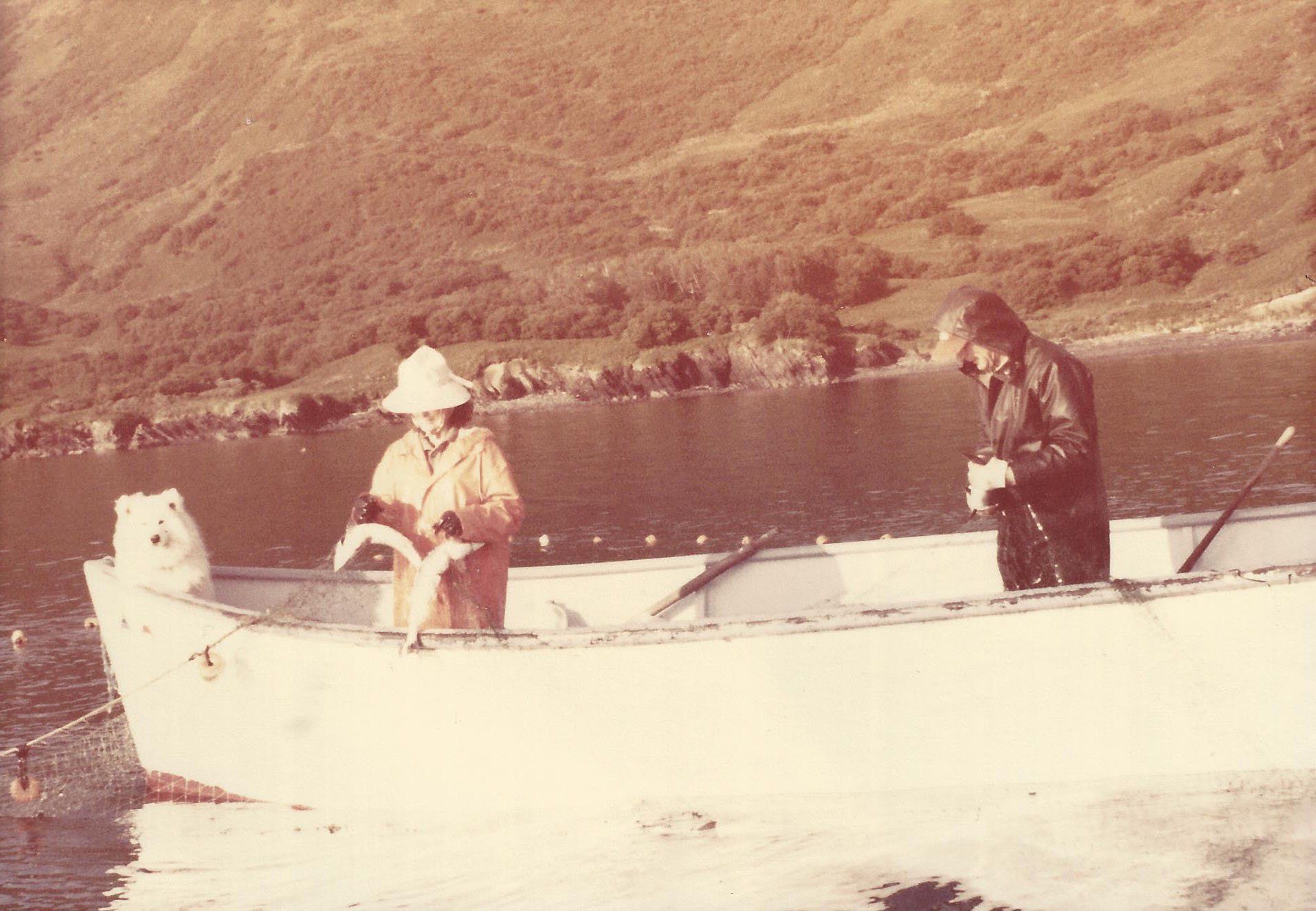

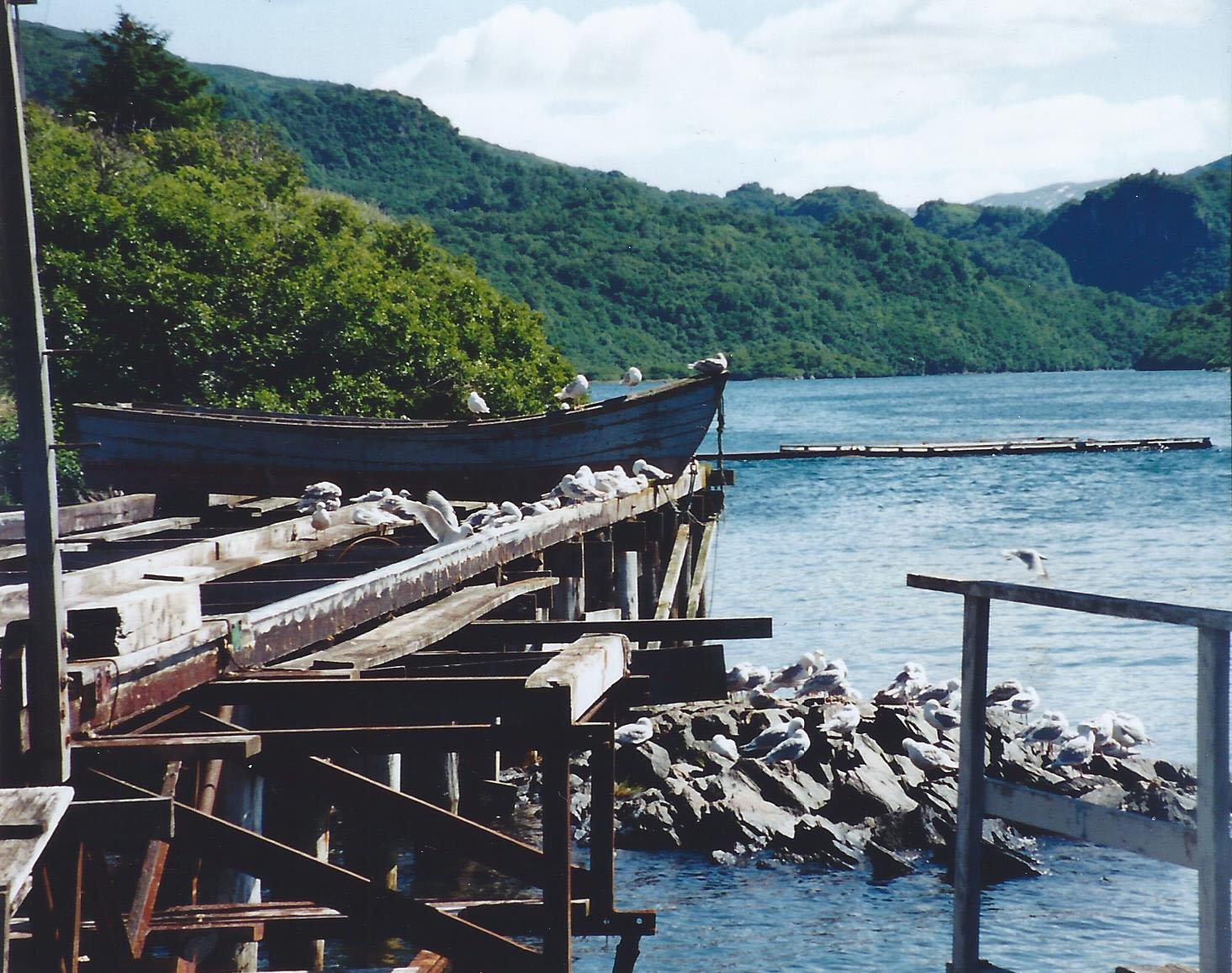
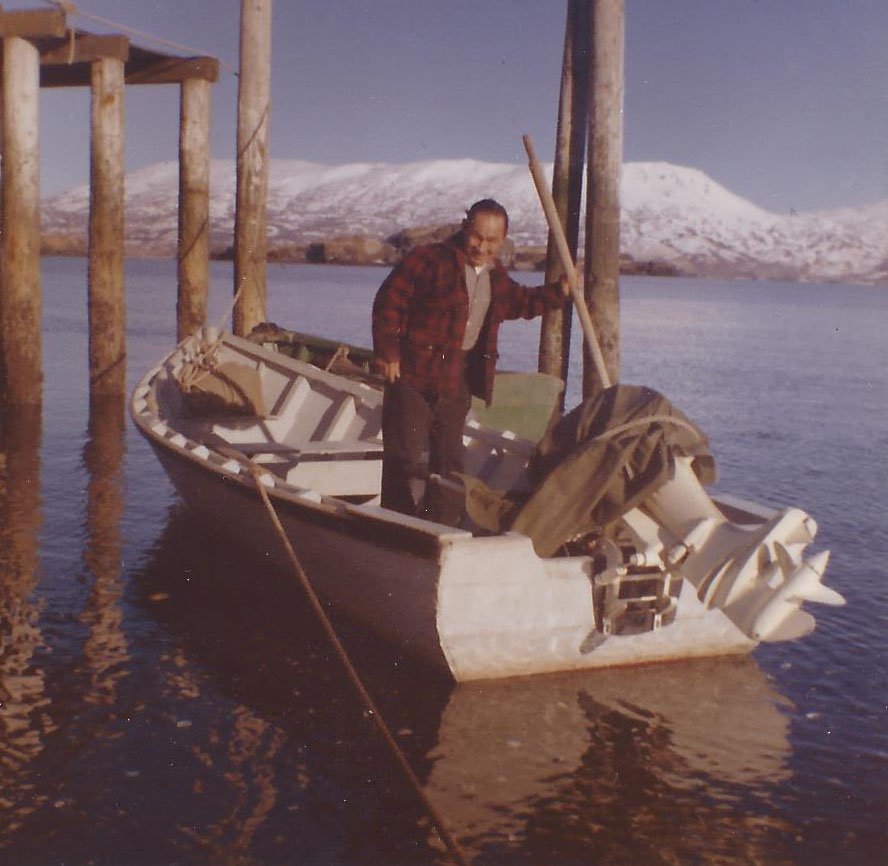

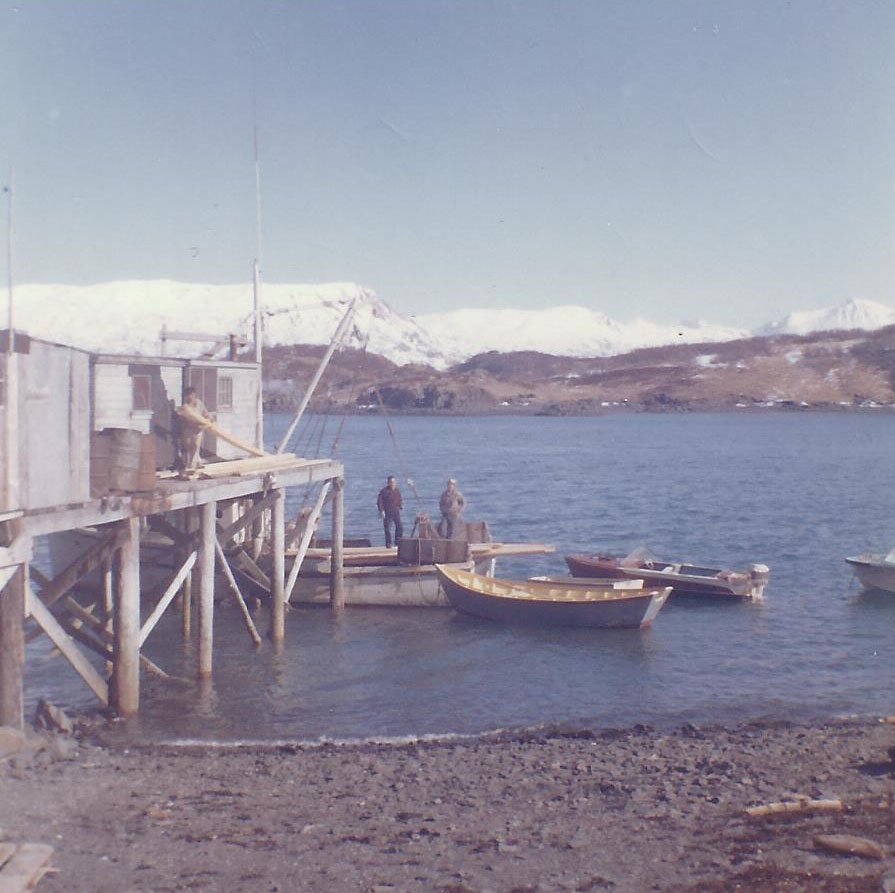

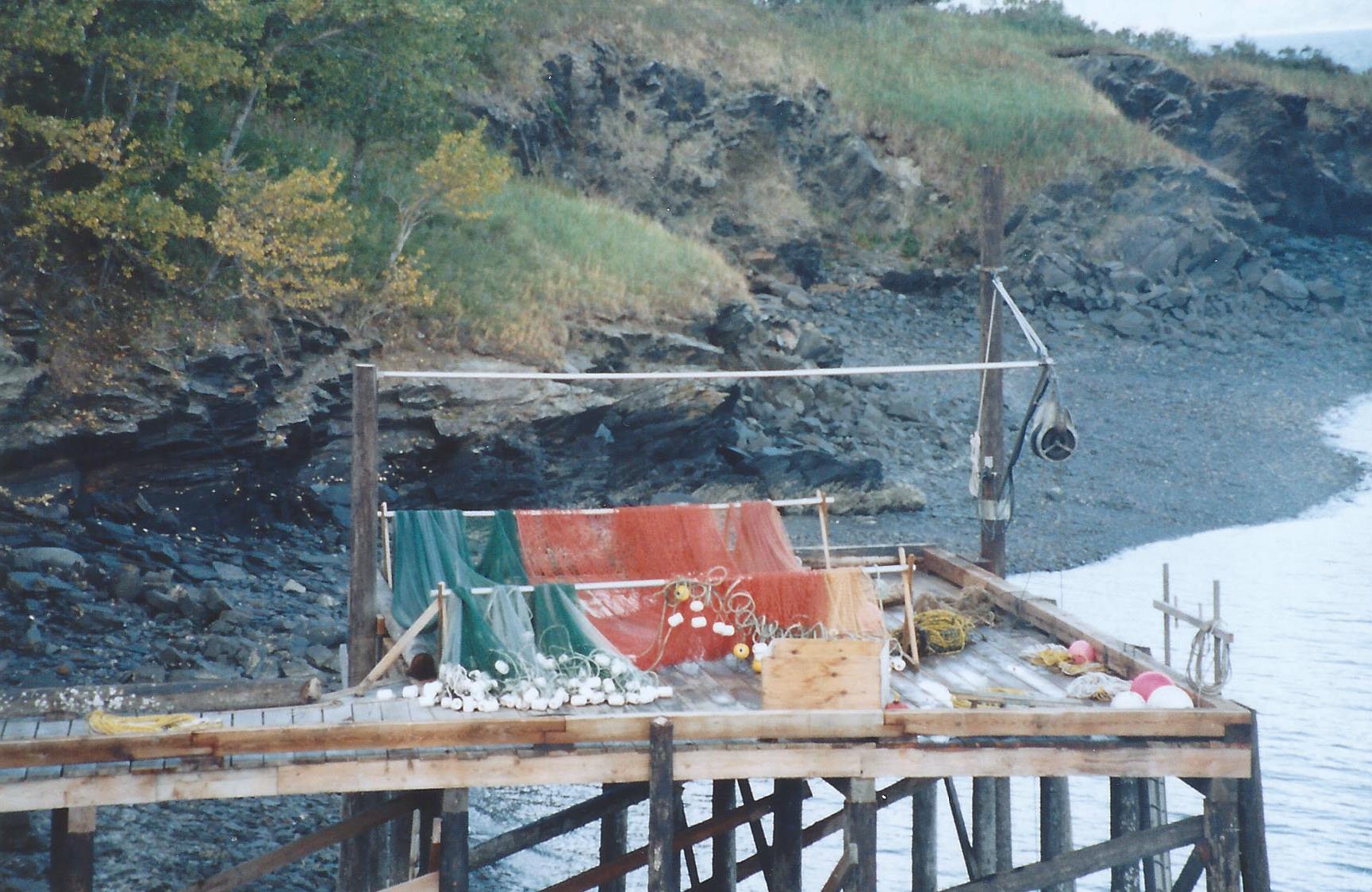

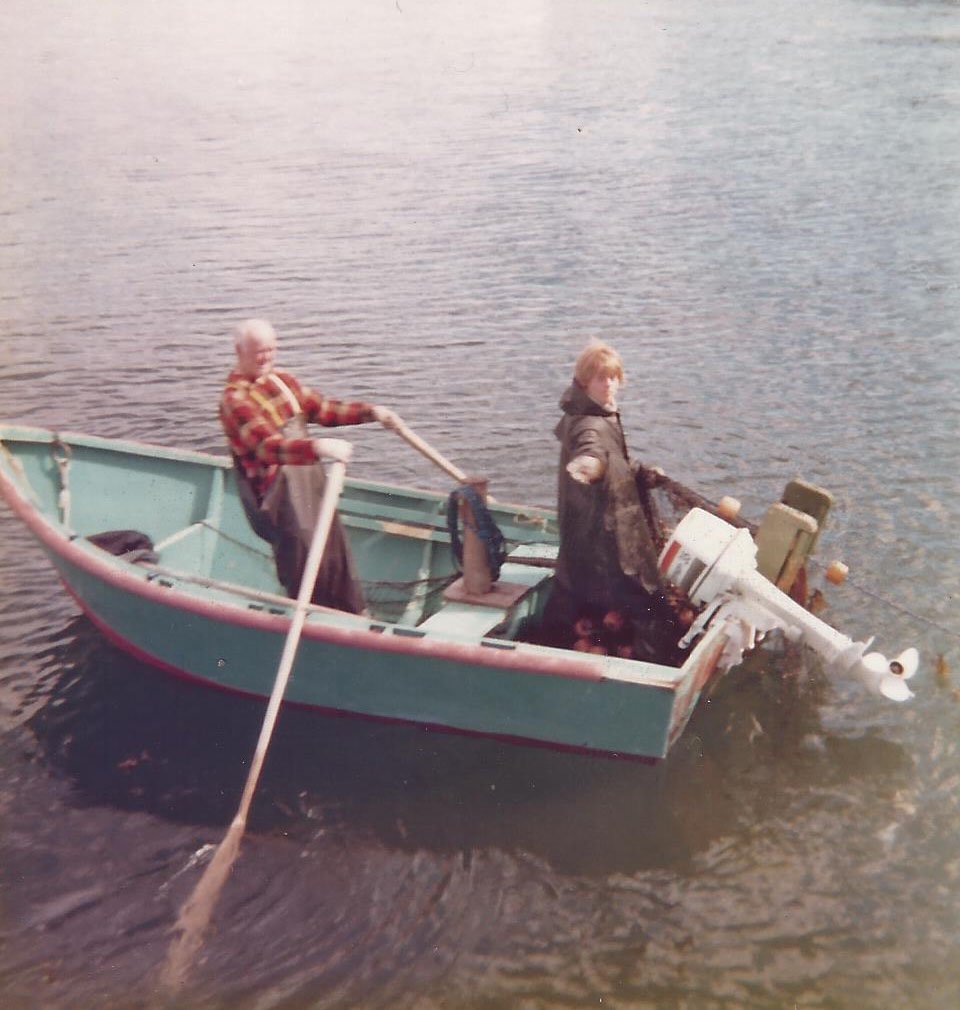

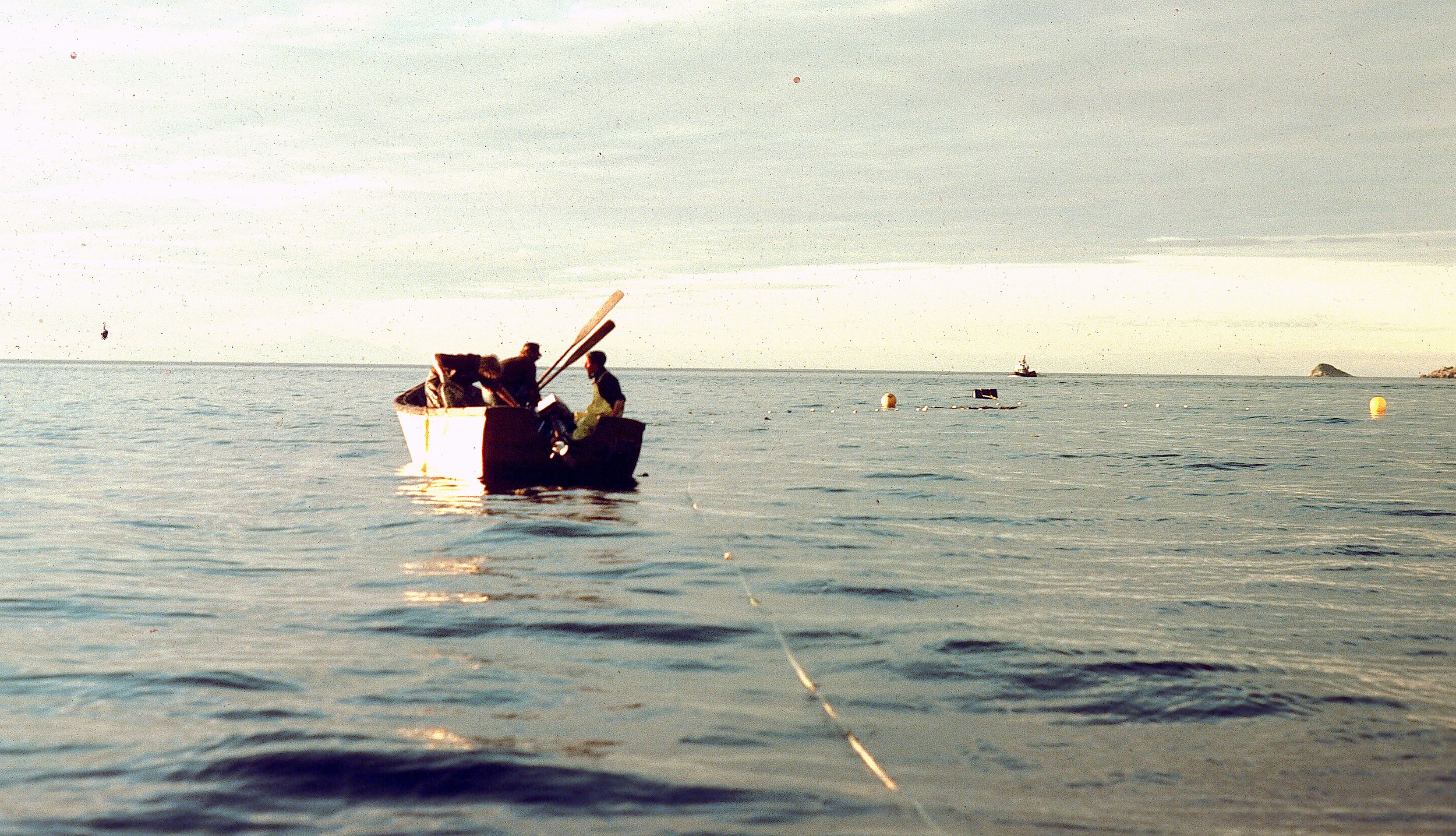

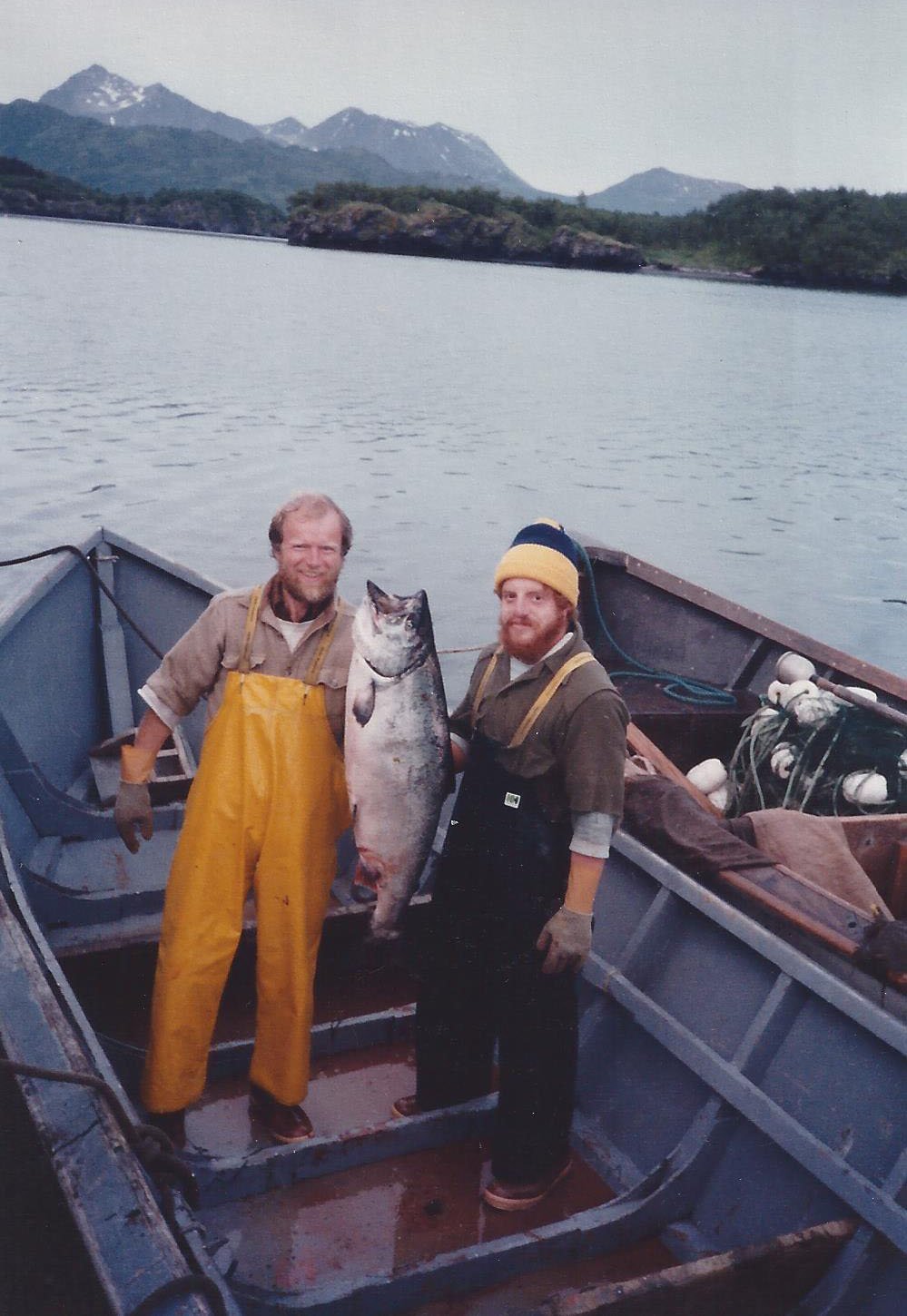

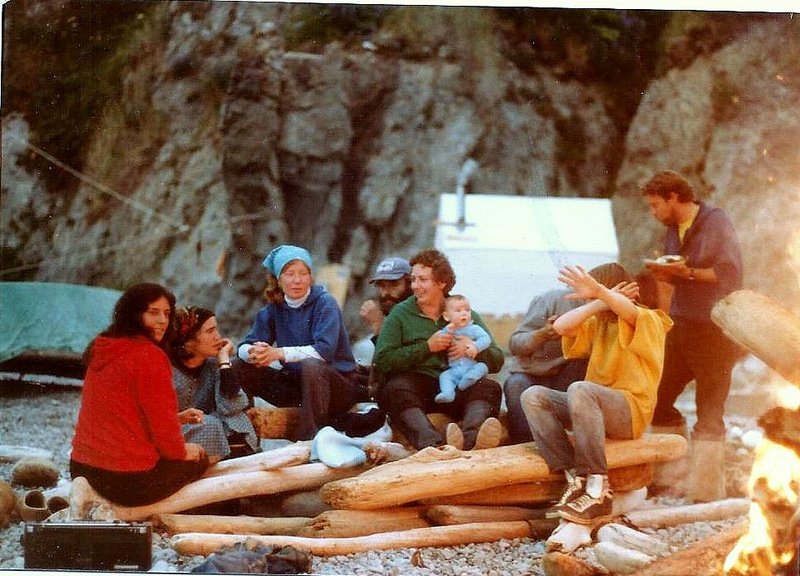


West Side Stories - oral history project by Anjuli Granthum
This oral history is part of the West Side Stories project of the Kodiak Historical Society. West Side Stories is a public humanities and art project that intended to document the history of the west side of Kodiak Island through oral history, photography, and art. The oral histories chart the personal stories of individuals with a longtime connection to the west side of Kodiak Island, defined for the scope of this project as the area buffeted by the Shelikof Strait that stretches from Kupreanof Strait south to the village of Karluk.
References
Alutiiq Language, http://www.alutiiqlanguage.org/dictionary.
Fish and Game Annual Report for the Kodiak District, 1944, Fish and Wildlife Service area annual reports and minutes, Bureau of Fisheries/Fish and Wildlife Service, District and Territorial Agencies, Alaska State Archives.
Fish and Game Annual Report for the Kodiak District, 1945, Fish and Wildlife Service area annual reports and minutes, Bureau of Fisheries/Fish and Wildlife Service, District and Territorial Agencies, Alaska State Archives.
Fields, Wallace. Personal interview and email communication, January 19, 2023 and April 2, 2023.
Fields, Weston. “Salmon Gillnetting.” Unpublished course material for Kodiak Community College, 1974-1975.
Fields, Weston. Personal interviews, January 19, 2023 and March 26, 2023.
Gard, Richard and Richard Lee Bottorff. 2014. A History of Sockeye Salmon Research,
Karluk River System, Alaska, 1880-2010. U.S. Dept. of Commerce. NOAA Technical Memorandum. NMFS-F/APO-125.413 p.
Jeffrey, Susan. A Legacy Built to Last: Kodiak’s Russian American Magazine. Kodiak: Kodiak Historical Society, 2008.
Kodiak Island Borough Alaska. About Our Community. https://www.kodiakak.us/61/Community
Kodiak Maritime Museum. Kodiak Waterfront Guide: Celebrating Our Maritime Heritage. The Community, Fishing Families and Seafood Industry of Kodiak, Alaska. Kodiak: Kodiak Maritime Museum, 2003.
Krupa, Megan, Molly Canfer, and Jeanette Clark. “Alaska Board of Fisheries Proposals 1959-2016.” KNB, April, 2017, https://knb.ecoinformatics.org/view/doi:10.5063/F1QN652R.
Pearson, Geneneiva. Interview by Anjuli Grantham. West Side Stories, June 12, 2015. https://voices.nmfs.noaa.gov/geneneiva-deedie-pearson
Roppel, Patricia. Salmon From Kodiak: An History of the Salmon Fishery of Kodiak Island, Alaska. Anchorage: Alaska Historical Commission, 1986.
Saltonstall, Patrick. Email message, January 16, 2023.
Torsen, Ron. Personal interview, January 22, 2023.
U.S. Fish & Wildlife Service. “Kodiak Brown Bear.” https://www.fws.gov/species/kodiak-brown-bear-ursus-arctos-middendorffi














